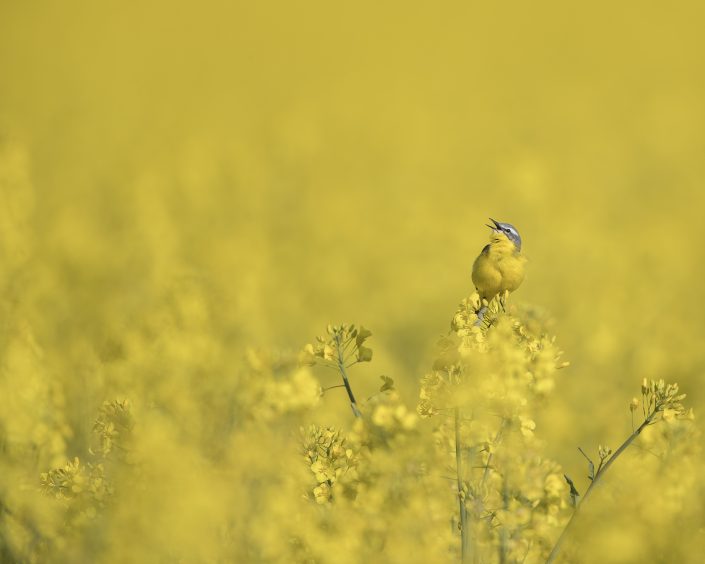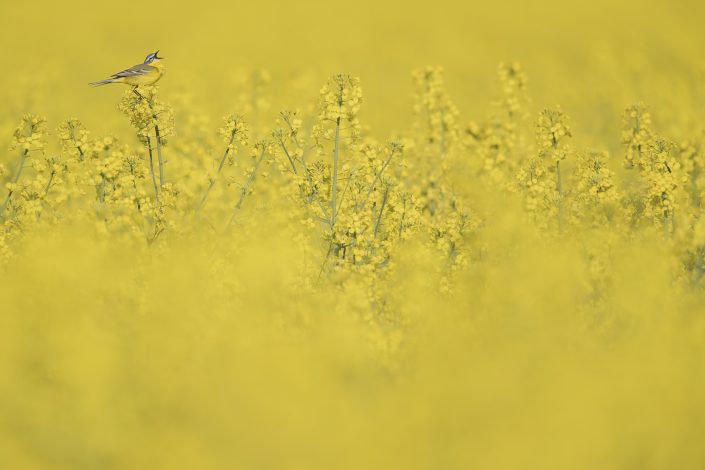This post is also available in: Swedish
Western yellow wagtail – Motacilla flava
Western yellow wagtail – Motacilla flava
The western yellow wagtail (Motacilla flava) is a small passerine in the wagtail family Motacillidae, which also includes the pipits and longclaws.
This species breeds in much of temperate Europe and Asia. It is resident in the milder parts of its range, such as western Europe, but northern and eastern populations migrate to Africa and south Asia.
It is a slender 15–16 cm long bird, with the characteristic long, constantly wagging tail of its genus. It is the shortest tailed of the European wagtails. The breeding adult male is basically olive above and yellow below. In other plumages, the yellow may be diluted by white. The heads of breeding males come in a variety of colours and patterns depending on subspecies.
The call is a characteristic high-pitched jeet. This insectivorous bird inhabits open country near water, such as wet meadows. It nests in tussocks, laying 4-8 speckled eggs.
Motacilla is the Latin name for the pied wagtail; although actually a diminutive of motare, ” to move about”, from medieval times it led to the misunderstanding of cilla as “tail”. The specific flava is Latin for golden-yellow.
This species’ systematics and phylogeny is extremely confusing. Literally dozens of subspecies have been described at one time or another, and some 15-20 are currently considered valid depending on which author reviews them. In addition, the citrine wagtail (M. citreola) forms a cryptic species complex with this bird; both taxa as conventionally delimited are paraphyletic in respect to each other. The populations of the Beringian region are sometimes separated as eastern yellow wagtail (M. tschutschensis).
It sounds like this
recording by José Carlos Sires from Xeno canto

























